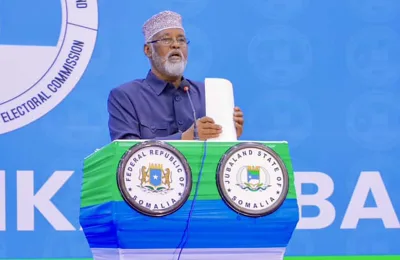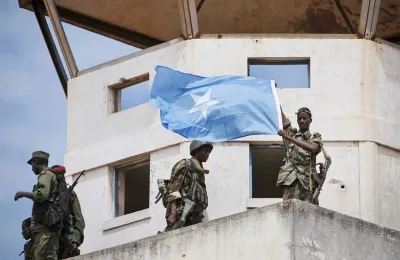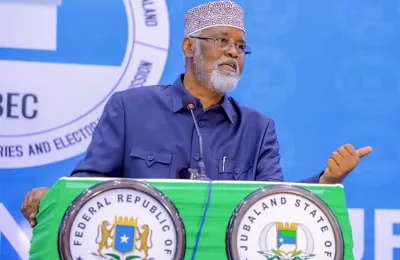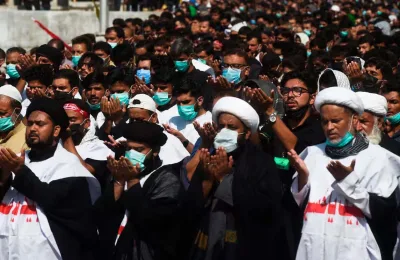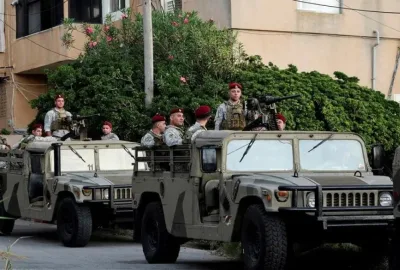(Nairobi) – Two United States airstrikes in Somalia in early 2020 killed seven civilians in apparent violation of the laws of…

(Nairobi) – Two United States airstrikes in Somalia in early 2020 killed seven civilians in apparent violation of the laws of war. US forces have not adequately investigated a February 2 strike killing one woman at her home, and a March 10 attack that killed five men and a child in a minibus.
Human Rights Watch found no evidence of a military target involving the Islamist armed group Al-Shabab in either airstrike. Neither the US Africa Command (AFRICOM) nor the Somali government is known to have contacted family members to investigate the attacks or assess their claims for redress. The US military should ensure that its investigations into civilians killed and injured during US military operations in Somalia are thorough, impartial, and transparent.
“The US military has not seriously investigated two recent airstrikes in Somalia in which civilians were killed and wounded in apparent violation of the laws of war,” said Laetitia Bader, Horn of Africa director at Human Rights Watch. “Reaching out to civilians seeking redress is not only the right thing to do, it will also help make its civilian casualty assessments more accurate.”
Between February and May, Human Rights Watch interviewed 14 people by phone, including relatives of those killed in the February and March strikes – four of whom visited the scene in its immediate aftermath – and assessed publicly available information about the airstrikes.
In its initial quarterly report on civilian casualty assessments published on April 27, 2020, AFRICOM said it examined 20 alleged airstrikes that caused civilian casualties between February 2019 and March 2020, and was still investigating 7 additional incidents, 2 of which Human Rights Watch investigated. The Human Rights Watch investigations found that 7 civilians were killed and 3 injured and found no evidence that they had links to Al-Shabab. Human Rights Watch was not able to identify the intended targets of the strikes, which occurred in Al-Shabab-controlled territory.
On the evening of February 2, at least one airstrike hit a home in Jilib, a town in the Middle Juba region, instantly killing a woman possibly between age 18 and 20 and injuring her two sisters, both children, and her grandmother. One of the girls, about 14, and the grandmother, about 70, sustained serious injuries. AFRICOM released a statement acknowledging that US forces carried out a strike that day in the “vicinity of Jilib” and reported that one “terrorist” was killed. AFRICOM’s initial assessment concluded that there were no civilian casualties. It has since said that it is still investigating.
On March 10, near the town of Janaale in Lower Shabelle, at least one airstrike hit a private minibus killing at least six passengers, including a child. Four of the passengers had attended a land dispute hearing in the town that morning and were heading home toward Mogadishu when the attack occurred.
A relative of one victim who visited the site that evening said he saw only two bodies and charred flesh. The brother of another victim who visited the scene the following morning said: “I only recognized the shoes of my brother and his belt. The license plate [of the minibus] was cut off and was in the ground, and the only thing left of the vehicle was the tail end and tires. Otherwise, the vehicle was totally destroyed.”
AFRICOM reported on the same day that it had conducted a strike in the vicinity of Janaale, killing five “terrorists.” It said that it was aware of social media reports of civilian casualties and that it would review any information provided, including by third parties.
Relatives of those killed in both incidents publicly denied AFRICOM’s designation of their relatives as Al-Shabab members and called on AFRICOM and the Somali government to meet with them. As of late May, AFRICOM had not contacted any of the relatives of the victims interviewed by Human Rights Watch, all of whom said they had not received any payment or assistance from the US or Somali governments.
A relative of the boy killed in the minibus strike told Human Rights Watch:
We request that they stop killing innocent people. They have to make sure is it a soldier or a civilian, they need to identify exactly [who they target] before they launch the attack. We also request that there be compensation, from Somali government and US government with help of Somali government.
AFRICOM’s previous investigations of airstrikes appear to have been inadequate, Human Rights Watch said. In its April report, AFRICOM said that it received information from third parties, including traditional and social media and nongovernmental organizations. But it made no mention of contacting or seeking to contact witnesses or family members of alleged victims. In a 2018 case in which AFRICOM acknowledged civilian casualties, Amnesty International found that neither AFRICOM nor the US embassy had contacted or provided redress to the relatives of civilians killed.
The US government authorizes commanders to provide ex gratia or “condolence” payments to families harmed by US military action. These payments are voluntary and are not an admission of fault or responsibility. AFRICOM stated in a June 1 letter to Human Rights Watch that no payments have been made in either of the two incidents of civilian casualties it has acknowledged in Somalia since 2017. It said it was continuing to work with the Somali government and the US State Department “on appropriate measures to address unfortunate instances of civilian casualties.”
AFRICOM recently set up an online public reporting portal, which includes Somali translation software, on which alleged civilian casualties can be reported. But this reporting mechanism is not accessible for many Somalis living in remote areas or where the internet is banned, including many in Al-Shabab-controlled areas, Human Rights Watch said.
AFRICOM should promptly contact relatives of civilian victims of the February, March, and other US airstrikes to ensure that their accounts and requests for redress can be heard, Human Rights Watch said.
The laws of war require parties to an armed conflict to take all feasible precautions to minimize harm to civilians and civilian objects. Deliberate or indiscriminate attacks on civilians, including attacks in which there is no military target, are prohibited. Warring parties have a duty to investigate allegations of serious laws-of-war violations and to provide redress for loss or damages caused by violations. Serious violations committed deliberately or recklessly are war crimes.
US forces operating in Somalia have an obligation to not only address alleged laws-of-war violations, but also to adopt measures to minimize the likelihood of civilian harm. Recurring cases in which civilians have been killed or injured and there was no evident military target indicate a need for the US forces to reassess their approach to targeting and to adopt all necessary measures to meet their international legal obligations, Human Rights Watch said.
“AFRICOM seems determined not to uncover whether its airstrikes killed civilians or violated the laws of war,” Bader said. “The military chain of command should recognize that not only does it have a legal obligation to investigate, but that basic decency toward the families of those harmed means providing financial assistance and an apology, not silence.”
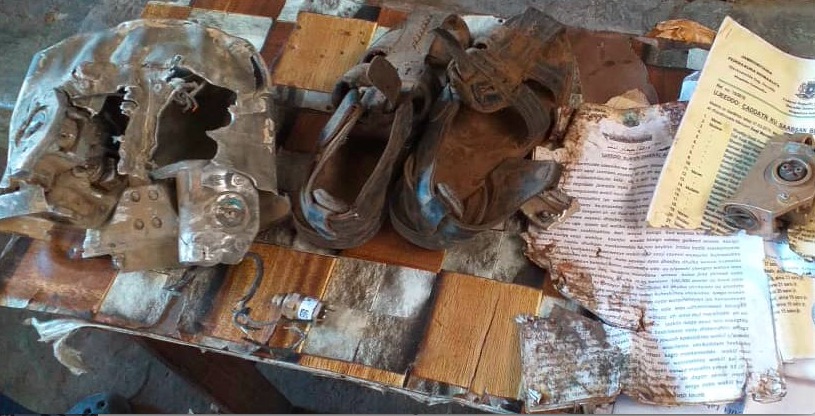
US Military Operations in Somalia
The US has been involved in military operations against Al-Shabab in Somalia since at least 2007. Airstrikes have increased since early 2017. The US military said it conducted 63 strikes in 2019 and at least 40 during the first 5 months of 2020.
In April, AFRICOM released its first quarterly report on civilian casualty assessments, in which it acknowledged killing two civilians and injuring three more in a February 23, 2019 strike. That brought the total number of civilian deaths it has acknowledged to four since 2007. However, Amnesty International documented 21 civilian deaths in 9 strikes between October 2017 and February 2020.
The legal frameworks under which the US uses lethal force in Somalia, including its standards for assessing civilian harm, are unclear. In March 2017, the Trump administration declared parts of Somalia “areas of active hostilities,” where warzone targeting rules would apply for at least 180 days. In its 2019 annual report on civilian casualties, the US Defense Department defined Somalia as “a declared theater of active armed conflict.” But in its June 1 response to Human Rights Watch, AFRICOM stated that in 2017, the US military received presidential approval to provide “additional precision fires in support of African Union Mission in Somalia (AMISOM) and Somali security forces operations,” including “authority to conduct airstrikes.”
As a matter of policy, the US government may provide redress or ex gratia payments for loss of property, injury, or loss of civilian life, including in cases in which the laws of war were not violated. Other available forms of condolence include acknowledging responsibility and providing medical care. Congress has authorized the Defense Department to use up to US$3 million annually for ex gratia payments. The Defense Department reported that in 2019, 611 ex gratiapayments were made “in the event of property damage, personal injury, or death that was assessed to have been incident to U.S. military operations in foreign countries.” It has not disclosed where or to whom the payments have been made.
Between February and May, Human Rights Watch interviewed 14 people by phone, including relatives of those killed in the February and March strikes, 4 of whom visited the scene in its immediate aftermath, and assessed publicly available information, including media reports, open source material, US military command statements, and an Amnesty International statement on the February 2 strike which provide detailed information on the incidents and helped identify the full names, ages, and status of the victims. For the March 10 strike, Human Rights Watch also assessed official IDs, court documents, videos, and photos said to be of the attack site.
Human Rights Watch shared preliminary findings of investigations into both incidents with AFRICOM on May 15. In its June 1 response, AFRICOM said that its investigations into these incidents were ongoing and referred to the initial strike assessments news releases.
Airstrike in Jilib, Middle Juba
On the evening of February 2, in the center of the Al-Shabab-controlled town of Jilib, a US airstrike using an unidentified explosive munition struck the home of a family, who had been eating dinner.
Human Rights Watch investigations indicate that 1 civilian, a woman, was killed, and 3 others were injured, including 2 girls.
Nurto Kusow Omar, about 18-20, was killed instantly by fragment wounds to her head. Her grandmother, Khadijo Omar Gedow, about 70, was seriously wounded from fragments in both her legs and remains unable to walk. Fadumo Kusow Omar, about 14, had to undergo surgery to remove fragments from her chest. Adey, about 5, suffered only minor wounds but has since had hearing difficulties.
Nurto’s aunt, who reached the family’s home the following morning, recounted what family members told her: “Nurto was standing along the gate, and my mum was also near the gate. The airstrike hit the ground, the pieces went up and hit Nurto in the head and killed her.”
Nurto’s and the two girls’ father, Kusow Omar Abukar, told a relative that he heard a huge sound and then couldn’t see anything for about 30 minutes, just a lot of smoke and dust. He said he could not understand what was happening to him. He told the relative, “I was so worried about my daughters but couldn’t see them.”
The family buried Nurto the following day and took Khadijo and Fadumo to the hospital without any interference from Al-Shabab.
The house, which was made of mud and sticks with tin roofing, was significantly damaged. The aunt said: “It exploded everywhere. Several rooms were burned – and the others were affected by the huge blast from the explosion.”
AFRICOM publicly acknowledged conducting a total of four strikes in the vicinity of Jilib between January 27 and February 3, including the strike on February 2, and strikes on February 1 and February 3. It told the monitoring group Airwars that the February 1 and 3 strikes had not resulted in any deaths of “terrorists” or destruction of property. Human Rights Watch reviewed satellite imagery taken between January 11 and March 1, 2020 that show visible new damage in several sites in Jilib town.
Airstrike Near Ugunji, Lower Shabelle
On March 10, between 3 and 4 p.m., a few kilometers outside the village of Ugunji in Lower Shabelle, a US airstrike hit a Homy minibus travelling from the town of Janaale toward the capital, Mogadishu, killing at least 6 passengers.
Janaale, 95 kilometers from Mogadishu, had been an Al-Shabab stronghold for years. While witnesses said that there had been no fighting that day, AFRICOM intensified its strikes that week, acknowledging at least seven strikes between March 9 and March 17 near Janaale. On March 16, the Somalia National Army and Ugandan troops from AMISOM entered Janaale and took control of the town.
Human Rights Watch investigations found that at least 6 people were killed in the strike, including 3 men over age 55 and a 13-year-old boy, who were on their way home to Mogadishu and nearby Elasha Biyaha. No evidence was found of any links to Al-Shabab.
Human Rights Watch received unconfirmed information that two Al-Shabab fighters may have boarded the minibus in or near Ugunji. Their presence may have been the basis for the US strike against the bus. The attack may have been unlawfully disproportionate, depending on the military importance of the alleged Al-Shabab fighters.
Early on March 10, four of the men travelled from Mogadishu and Elasha Biyaha to Janaale for a land dispute hearing. The four included Abdullahi Ali Mohamoud (known as Macalin Abdullahi), 56; Abdirahman Ali Muhammad (known as Abdirahman Wadhoor), late 60s; and Mohamed Isaaq Mohamed (known as Sheikh Macalin Ooyaye), 67, who were religious scholars with a Sufi order called Jamaaca Qadiriya. All three lived in Mogadishu.
Abdirahman Wadhoor and Sheikh Macalin Oyaye were relatives of a respected sheikh from their order whose family owned the land under dispute but who was reportedly not able to travel to the area. They were accompanied by Ahmed Aden Osman (also known as Ahmednor or Ahmedniic), a member of the same Sufi order who served as a notary in the case.
Relatives of the men said that the land dispute had been ongoing but that the March 10 hearing was the final one and closed the case. According to relatives and court documents seen by Human Rights Watch, the case had already been heard in a district court in Mogadishu and in the Lower Shabelle court of appeal in the town of Merka in 2019.
A relative of Sheikh Macalin Oyaye said that prior to the men’s departure for Janaale, “[w]e prayed in the mosque together on Tuesday morning [March 10] in Mogadishu. He went home, dressed well. He told me ‘I’ve been sent by Sheikh Noor, with two other people, to Janaale, to sort out the land dispute.’ I told him that area is very risky, let’s stay in touch.”
The minibus driver, Abdiweli Aden Barre, 30 and the father of 5, was among the dead. A relative said he regularly travelled between Elasha Biyaha and Janaale, mainly transporting fruit, vegetables, and passengers. Relatives of the four men involved in the land dispute said they had hired the minibus for the trip after looking for a driver who would have had permission from Al-Shabab to travel this route.
Abdifatah Farhan Mohamoud, a 13-year-old relative of the driver, was also riding in the bus on the return journey and was among the dead. He was travelling home to Elasha Biyaha after visiting his father in Janaale.
Relatives told Human Rights Watch that the last time they heard from the four men and the driver was around 2 p.m., when they stopped for lunch in the village of Ugunji, eight kilometers from Janaale, on their way home.
The airstrike hit the minibus a few kilometers outside Ugunji and killed the six immediately and destroyed the minibus.
A relative of 13-year-old Abdifatah, who visited the scene the evening of the strike, said:
I found Abdifatah’s body and another body that you could see was human, but the other bodies were completely burned, just meat. Abdifatah was burned, only a small part of his face could you still recognize. I am remembering that moment, it’s still so hard to think about it.
The relative said that he along with other local residents buried the bodies near Ugunji that evening. Relatives of the driver and older men who travelled to the area the next day said that Al-Shabab authorities told them that the bodies were in such a state that they needed to be buried right away.
The relatives who arrived at the scene said they found just the back of the vehicle, tires, and detached license plate intact. Human Rights Watch reviewed photos and videos shared by relatives but initially taken by Al-Shabab that appear to show the body of Abdifatah and the remains of the vehicle. The body exhibited profound and widespread flash burns to the skin and clothing. The photos match the descriptions given by the relatives.
A Human Rights Watch arms researcher reviewed photos of the vehicle and the scene of the attack and concluded that the vehicle most likely had been hit by a small air-delivered munition consistent with a US Hellfire-type missile. The vehicle was destroyed by a large blast effect that crushed the passenger cabin, blew the rear cargo door off its hinges and shattered all the automotive glass. Relatives also shared with Human Rights Watch photos of remnants of a Hellfire missile that they said they found at the scene, but it was not clear whether these remnants were in fact from the attack.
Relatives held onto the objects they found. “I saw pairs of shoes,” said the brother of one victim. “I wasn’t sure which shoes my brother was wearing, so I called his wife. She said black boots. I saw a small piece under tree, so also picked that up.”
Relatives Demand Redress
Families of civilians killed in fighting in Somalia, including from airstrikes, rarely speak out about their loss because of a legitimate fear of reprisals, including by Al-Shabab, and the widespread climate of impunity in the country. However, relatives of those killed in the February and March incidents – several of whom live in Mogadishu – publicly called on AFRICOM to acknowledge that civilians had been killed in the airstrikes.
The relatives have spoken to the domestic and international media in Mogadishu. One condemned the February 2 strike on Twitter, and a parliamentary representative of the March 10 victims has also spoken out publicly.
The relatives Human Rights Watch interviewed said that neither AFRICOM nor the Somali government has sought their account of events or provided any medical or financial assistance.
A relative of the February 2 victims said that Khadijo, the grandmother, “still can’t stand, go to toilet, and her entire family has to look after her.”
A nephew of Abdirahman Wadhoor, killed in the minibus strike, said:
This issue will keep coming. This won’t stop. We can’t be silent. We are already suffering because of Al-Shabab. Let them [the US] apologize, accept that they have killed civilians, not Al-Shabab. And also compensate. Some of the victims had children, my neighbor had five children. My uncle also had small children.”
Recommendations to AFRICOM and for Somali Government Support
- Take all necessary measures to minimize civilian loss of life and property in military operations, and otherwise abide by the laws of armed conflict applicable in Somalia
- Promptly and transparently investigate allegations of laws-of-war violations and publicize findings and any disciplinary actions
- Strengthen efforts to communicate with relatives of civilians killed in military operations. Set up a mechanism to provide safe and accessible channels for families to report allegations of civilian harm, including through members of Parliament, clan representatives, or an identified government ministry
- Establish a secure toll number for families who do not have access to the internet and cannot or do not want to present their allegations via a Somali government representative but wish to make their allegations in Somali
- Provide prompt and adequate redress for civilian victims of laws-of-war violations. Set up a system to provide condolence payments for civilian casualties and property damage as has been done elsewhere, such as in Afghanistan. In addition to monetary payments, options could include public acknowledgement, apologies, and livelihood assistance, reflecting the circumstances, needs, and preferences of affected civilians
- In quarterly US reports on civilian casualty investigations, include the methodology used in such assessments for distinguishing between combatants and civilians
- Periodically review the methodology used with a view to improving the accuracy and transparency of the assessments
SOURCE:HRW


